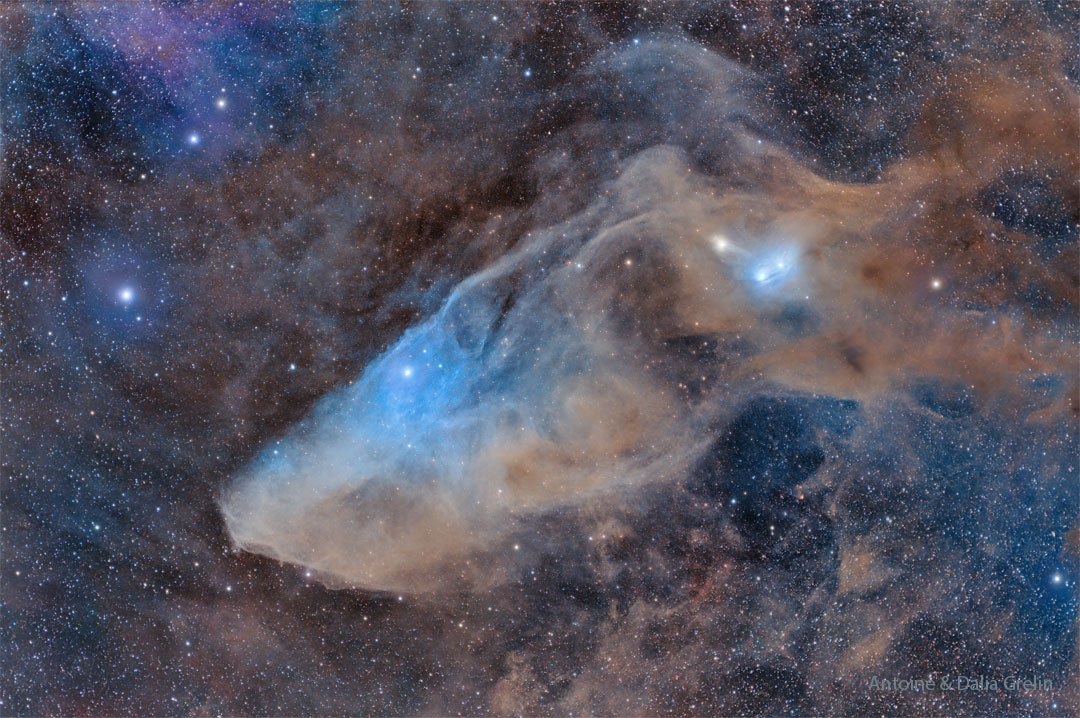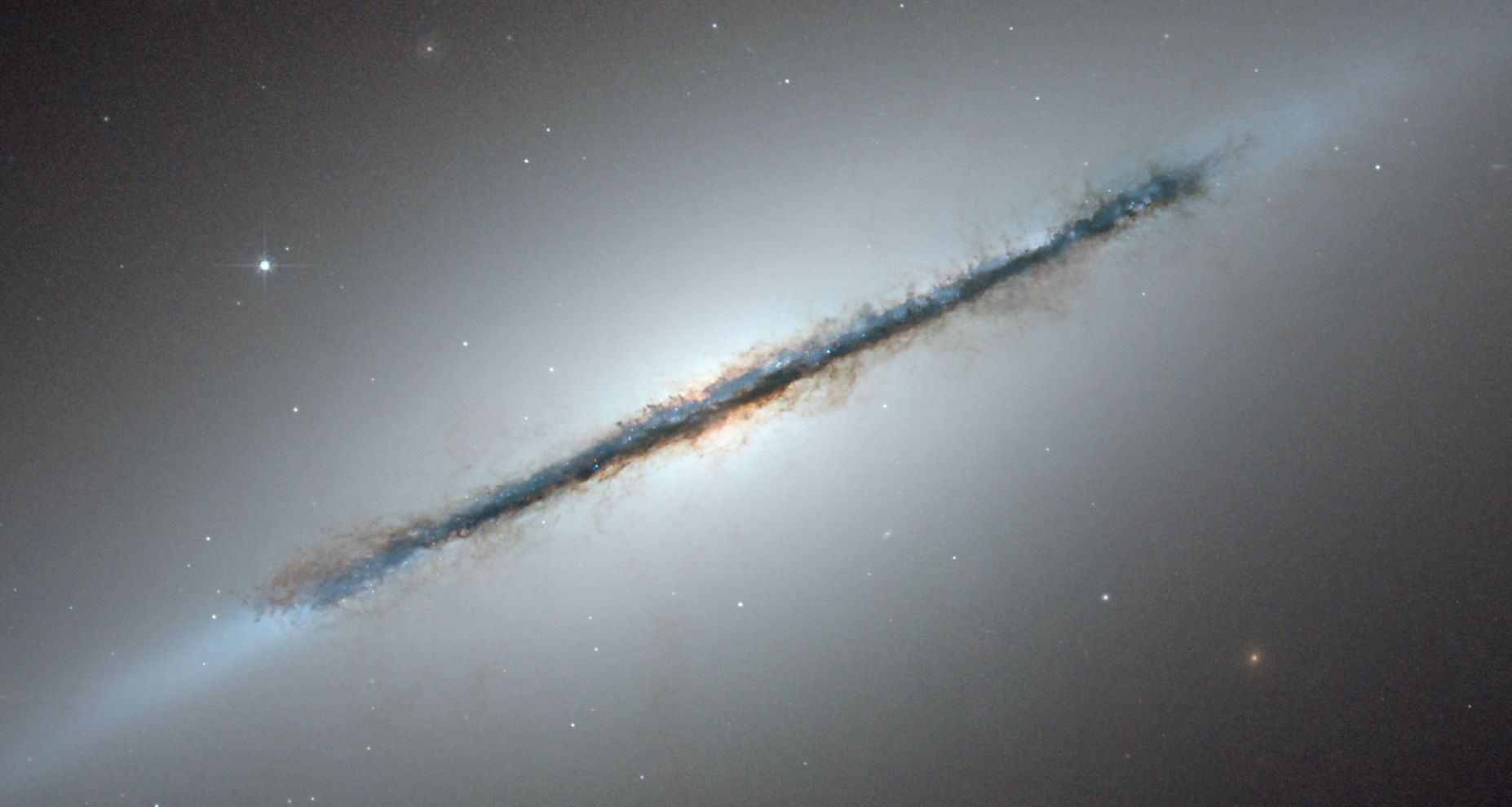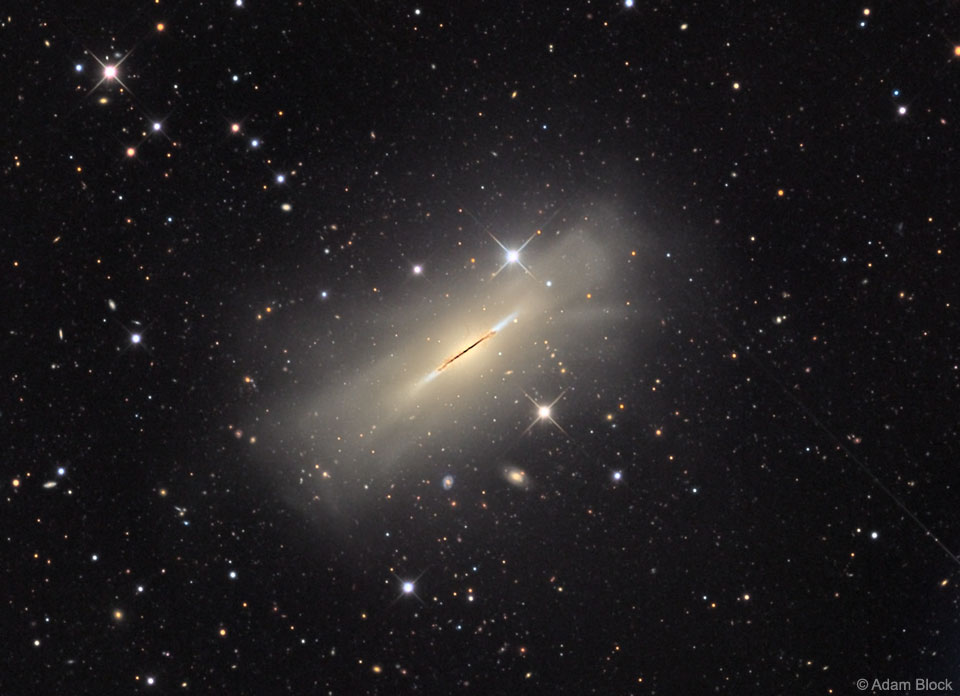Today's APOD is all about reflection nebulas. That is to say that the APOD is about a few stars, and about dust that has or hasn't scattered light from these stars (or has the light been refracted, Chris?).
I'll leave it to you to explain the difference between reflection, scattering and refraction, Chris, and I'm going to use the words reflection and scattering. But let's look at the dust first. Dust both scatters and "kills" light. Shortwave (bluer) light is scattered away first, and longer and longer wavelength (redder) light is scattered away later. In the end, light is "killed", because it can't penetrate the thick dust.
In this picture from
2MASS (I think), you can see how a dust cloud reddens the light from the stars behind it. The light from stars behind the dust goes from yellow (thin dust) to orange (thicker dust) to red (even thicker dust) to black, where the light from the stars is extinguished altogether.
Take a look at the fascinating dust lane of galaxy NGC 5866:
Look closely, and you'll see that only the middle part of the dust lane is "pitch black". There are little brown curlicues rising from the dust lane. These things are most likely dusty remnants of past supernovas exploding in the dust lane. Right in the middle of the dust lane, the fluff rising from the dust lane becomes yellow-orange. This is because light from the bright core of NGC 5866 is being reflected in the dust.
Yes, but please note that parts of the dust lane are bluish. Look carefully (enlarge the picture) and you can see individual stars in the dust lane. What we are seeing is a faint bluish reflection nebula almost along the entire length of the dust lane. Dust in front of some of these stars - and the dust must not be
too thick - scatters blue light from these stars.
Also note that where the dust lane ends, diffuse faintly bluish light seems to continue in the same direction as the dust lane on both sides of it, as if the dust lane had been "extended by light". (Or if someone had lit up a light sword inside the dust lane.)
What we are seeing is stars that are slightly hotter than the stars around them. I'd say that the slightly hotter stars are typically spectral class F, and they are remnants of star formation in the dust lane that took place when the dust lane was much larger. Now the dust lane has shrunk, because its gas has been used up in star formation, and the hot stars that were once born there have died. But the F-type stars remain, now nakedly deprived of their cover of dust, like narrow but diffuse beams of ever so slightly bluish light.
Can't keep a larger picture of NGC 5866 away from you. Note the dark dust lane and the thin bluish beams of light emerging from the ends of it (and the tidal mess of streamers and strands of faint yellow stars creating a large cloud around the galaxy):
So let's finally return to today's APOD!
The large blue reflection nebula, IC 4592, is lit up by blue light scattered by dust from the hot bright blue B2V-type star Nu Scorpii. But do note three other reflection nebulas as well. Nebulas vdB 102 and vdB 103 are lit up by smallish stars of spectral class B9V, which are just a tad hotter and brighter than Vega.
Perhaps even more interesting is reflection nebula vdB 101, which is yellow-white in color. Shouldn't reflection nebulas be blue? Yes, they typically are, but not if the star whose light they reflect is very non-blue. The star lighting up vdB 101 is HD 146834, a modest yellow-orange K0III star, just a tad cooler and brighter than Pollux.
Interestingly, if you check up HD 146834 in
Simbad's Astronomical Database, you find a picture of this star surrounded by faintly bluish strands of reflection nebulosity. Oh well!
At the very least,
Simbad admits that the reflection nebulosity surrounding red supergiant Antares is orange in color!
Ann
 IC 4592: The Blue Horsehead Reflection Nebula
IC 4592: The Blue Horsehead Reflection Nebula


